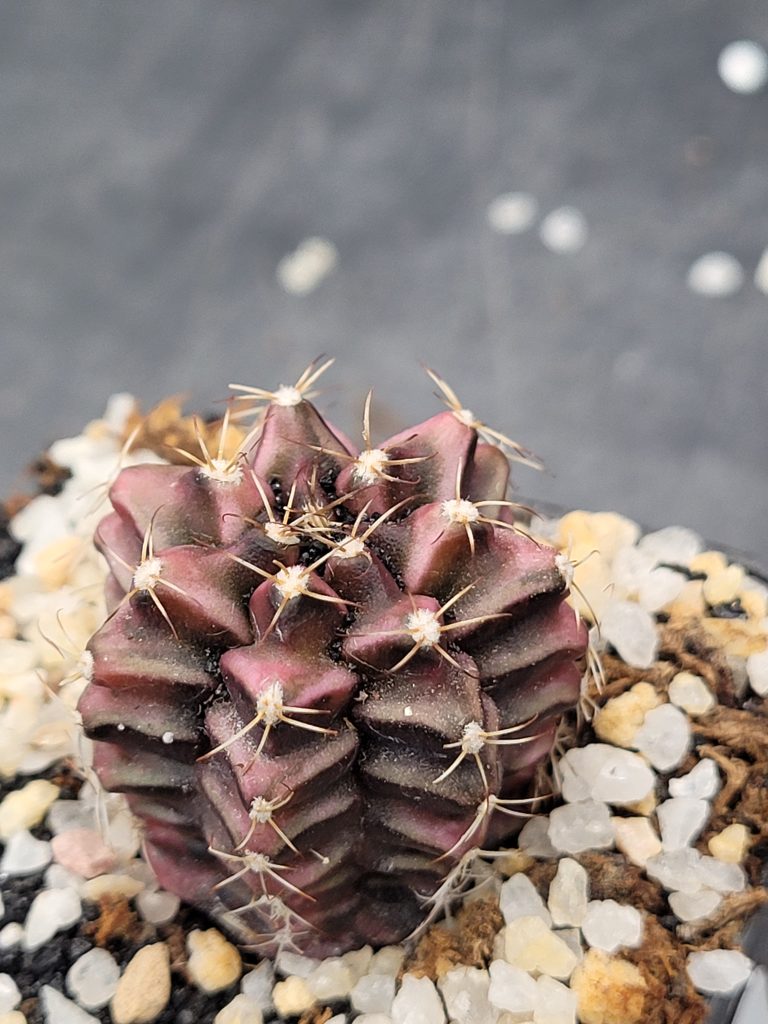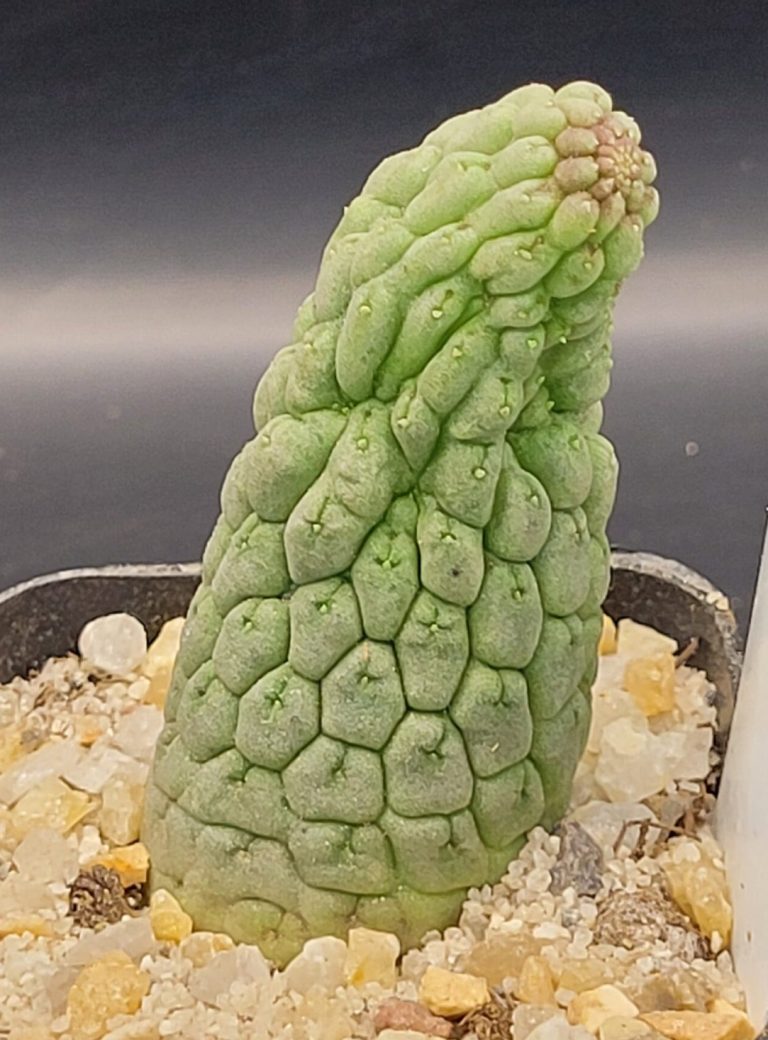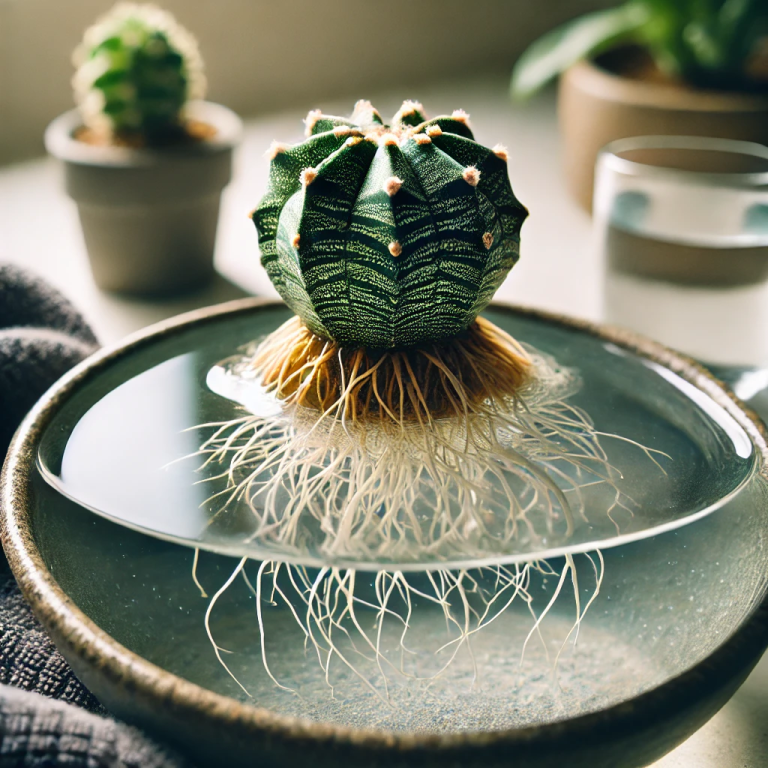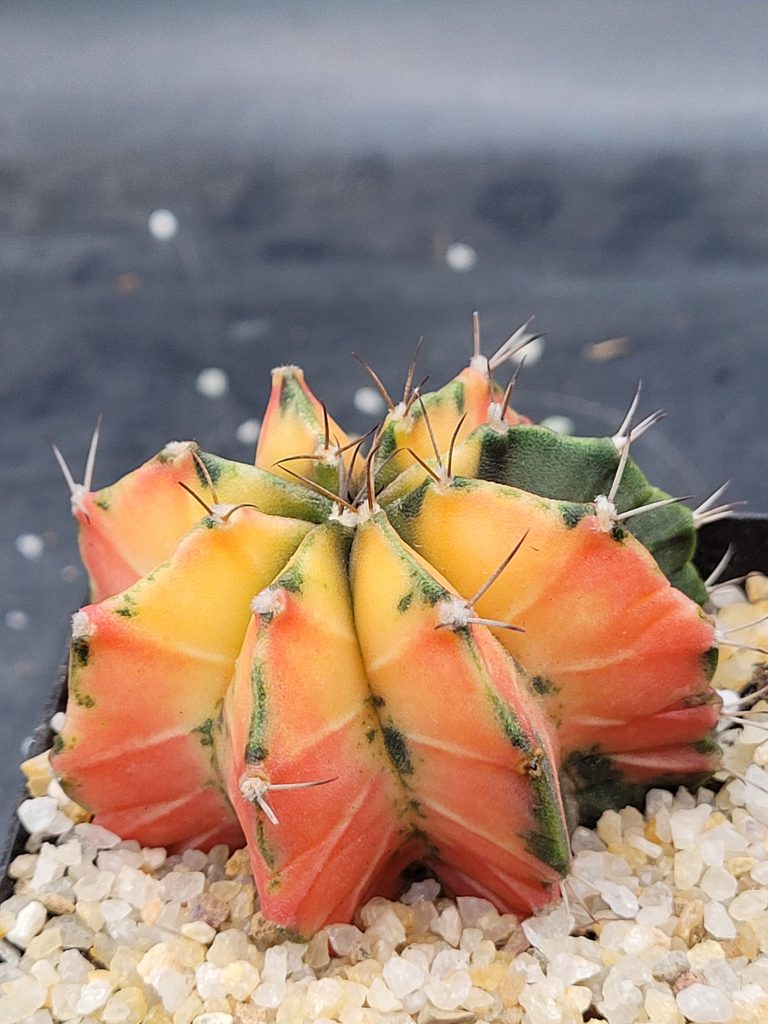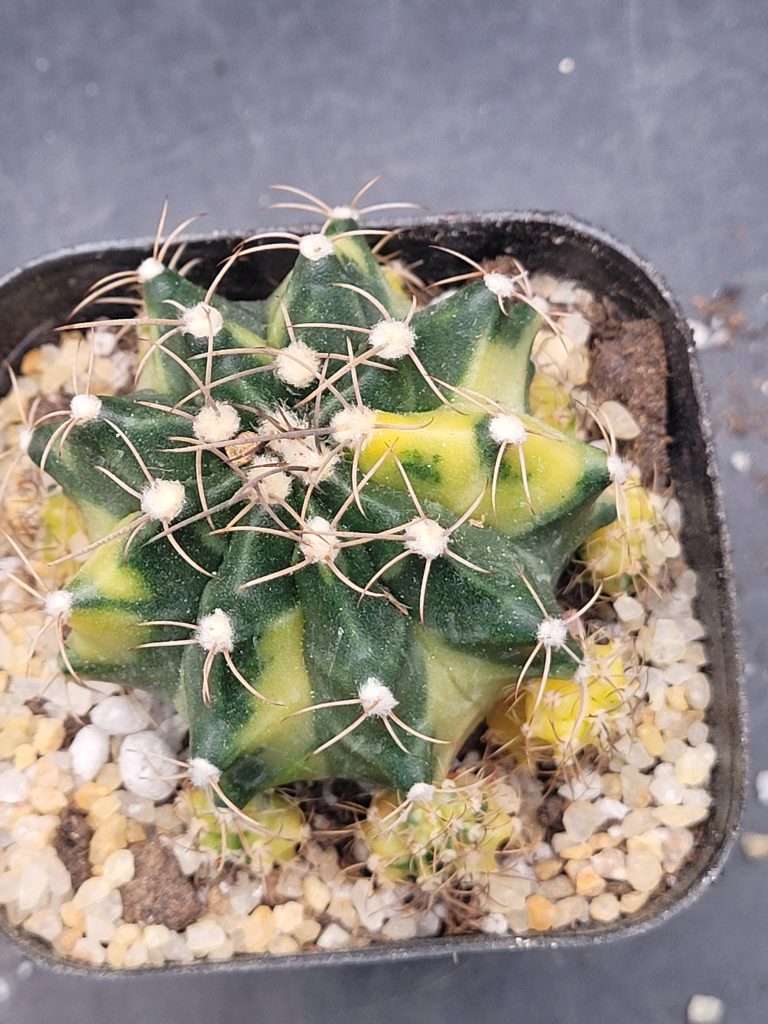If there’s one cactus that can light up a space like a jewel catching the sun, it’s the Gymnocalycium Mihanovichii “Ruby” Clone. This stunning cultivar is a kaleidoscope of deep reds, bold oranges, warm yellows, and emerald greens, making it one of the most eye-catching members of the Gymnocalycium family. Aptly named “Ruby,” this cactus evokes the warmth, radiance, and rarity of its namesake gemstone.
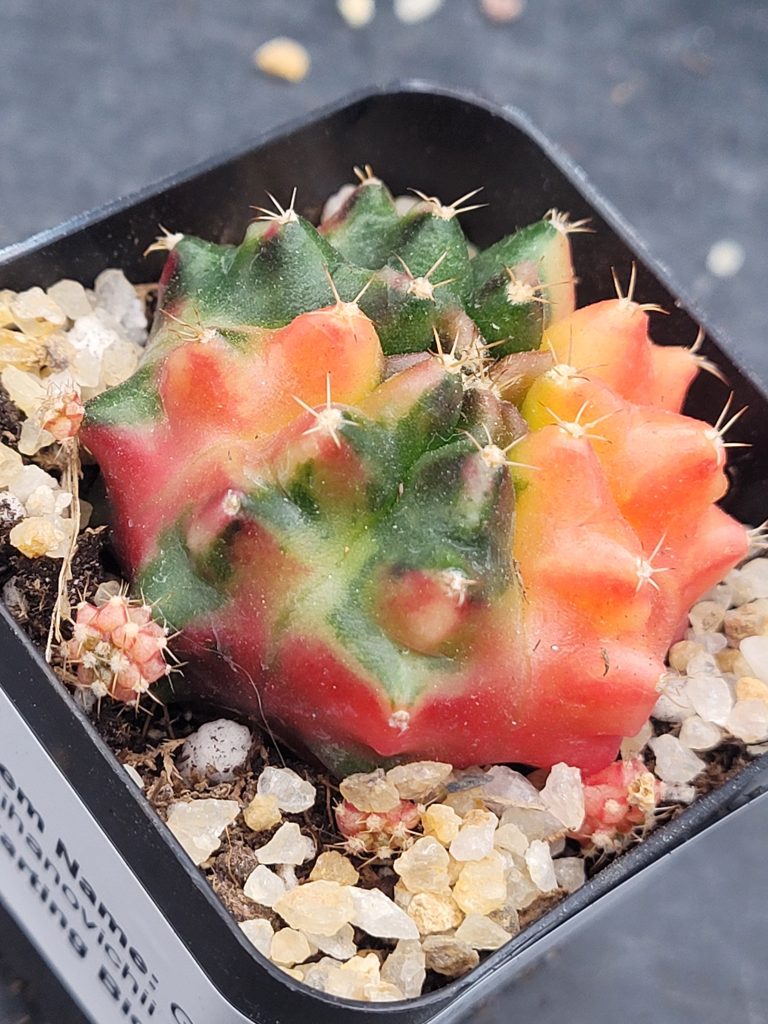
🔥 A Blaze of Color
What sets the Ruby clone apart is its fiery gradient of colors that seems to smolder from the inside out. At the base, vivid reds and pinks pulse through its body, blending seamlessly into golden oranges and lush greens near the crown. No two Ruby clones are exactly alike—each one displays a unique flame-like pattern that makes it a prized centerpiece in any cactus collection.
Unlike some Gymnocalyciums that lean toward subtle variegation or symmetry, the Ruby clone is bold, asymmetrical, and unapologetically vibrant. It’s a showstopper in every sense.
🌱 Care Tips for the Ruby Clone
Despite its exotic look, the Ruby clone is surprisingly easy to care for with just a few considerations:
- Light: Prefers bright, indirect light. Too much direct sun can scorch its delicate variegated skin, while too little will mute its colors. Filtered sun or a grow light works great.
- Water: Water thoroughly when the soil is completely dry. Like all Gymnocalyciums, this clone is susceptible to root rot if overwatered.
- Soil: Use a gritty cactus mix that drains quickly. Amend regular cactus soil with extra pumice or perlite.
- Temperature: Keep above 50°F (10°C). Ruby does best in warm, stable conditions—perfect for sunny windowsills or controlled greenhouses.
- Potting: A well-drained pot, ideally made of terracotta or unglazed ceramic, will help wick moisture away from the roots.
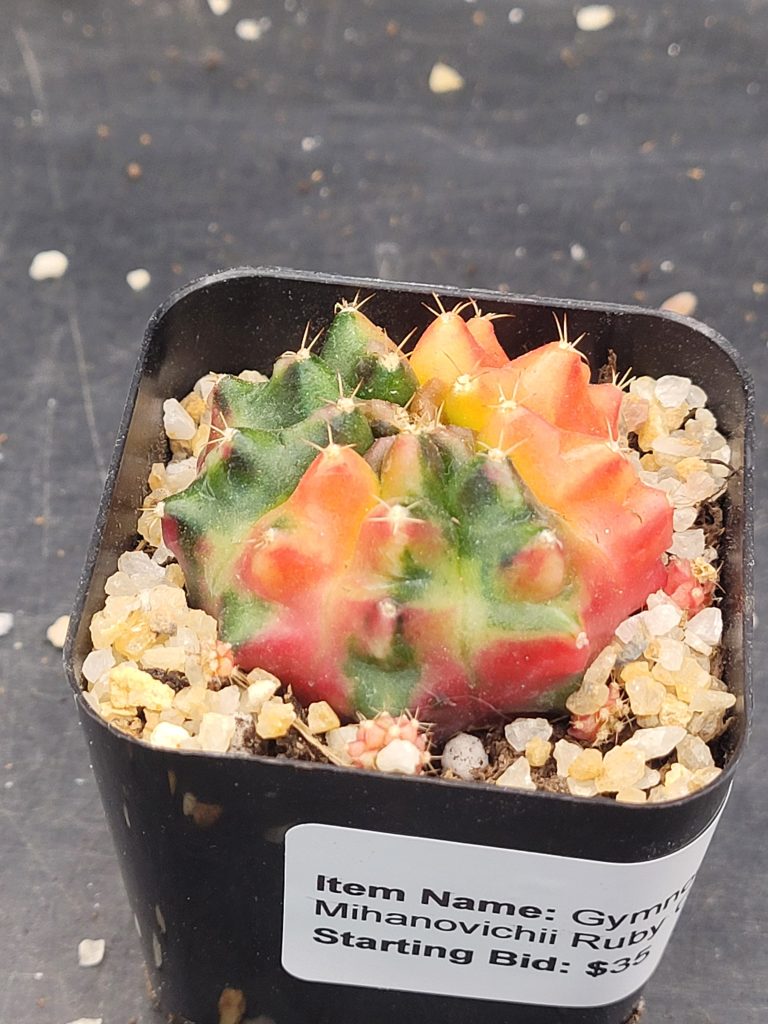
🧬 Propagation & Growth
The Ruby clone typically grows as a solitary cactus, although some specimens may produce small pups over time. If pups appear, they can be carefully separated once mature and rooted in fresh soil. As with many variegated types, seedlings can vary wildly—making propagation a fun but unpredictable adventure.
While it’s a relatively slow grower, the payoff is immense. With time and proper care, a mature Ruby clone can grow into a spectacular, richly colored mound.
💎 Why You Need the Ruby Clone in Your Collection
Whether you’re drawn to the intensity of its color, its gem-like glow, or its uncommon variegation, the Gymnocalycium Mihanovichii Ruby clone is a must-have for collectors who value vibrant expression in their plants. It’s a living flame in cactus form—a constant reminder of nature’s artistry.
If you’re looking to add a piece of the sunset to your shelf, the Ruby clone is waiting to spark joy.
Do you have a Ruby clone in your collection? Share a photo or tell us how yours has grown in the comments below! 🌵❤️🔥



